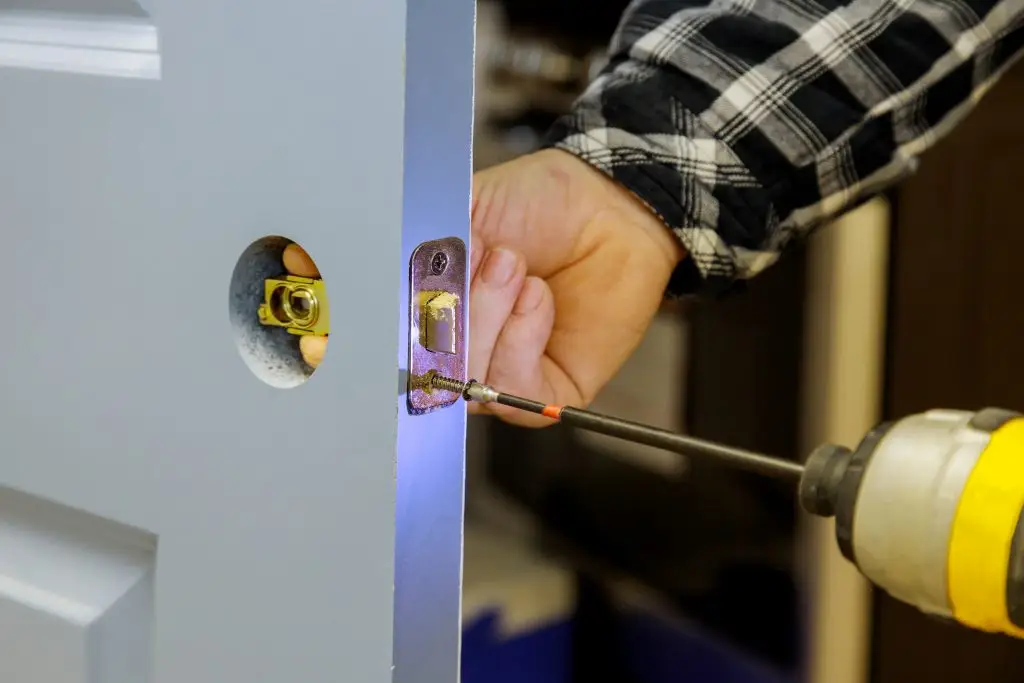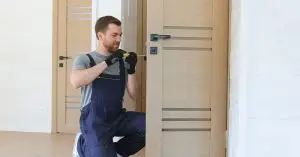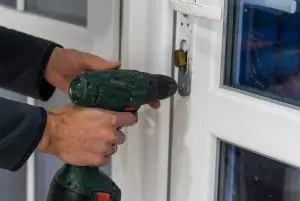Fire safety inspections are a routine part of keeping homes, offices, and public buildings safe. During these checks, inspectors evaluate alarms, extinguishers, exits, and escape routes. What many people overlook is the role locks and doors play in these assessments. As locksmiths, we see how secure entry points are not only about preventing intrusions but also about supporting safe evacuation in emergencies. Our team at Calgary Lock Services has seen firsthand how the right hardware and regular checks make a big difference during fire safety inspections.
Why Locks Are Part of Fire Safety
Every exit must remain easy to open in an emergency. A strong lock can protect property, but if it prevents quick escape, it becomes a hazard. Fire codes require that certain doors open without keys or complicated steps. Panic bars and push-release locks are often mandatory in busy buildings. As locksmiths, we understand how to balance security with compliance. Our role includes making sure locks meet standards so inspectors do not mark them as unsafe. This helps avoid costly delays and ensures safety for everyone inside.
The Connection Between Locksmiths and Fire Codes
Local fire codes specify how doors and locking devices should function during emergencies. Some codes restrict the use of double-key deadbolts, while others demand fire-rated door assemblies. Our job is to stay updated on these rules and explain them clearly to property owners. By doing this, we help prevent penalties and ensure smooth inspections. In Calgary, requirements can differ depending on the type of building and its occupancy level. We guide clients through these rules so their property stays both secure and safe. When you search for a locksmith Calgary, you expect someone who knows these standards. That knowledge is what keeps compliance practical and reliable.
Panic Hardware and Safe Evacuation
One of the most common issues inspectors check is whether emergency exits are fitted with proper panic hardware. These devices allow doors to open quickly when pressure is applied, even by children or older adults. Our team installs and maintains this equipment so people can exit safely during emergencies. Inspectors often test these doors to make sure they work smoothly without extra effort. We recommend regular maintenance because dust, rust, or worn parts can cause delays at critical moments. Ensuring panic hardware is in top condition is one of the most practical steps in preparing for inspections.
Key Management in Emergencies
A challenge in fire safety is how keys are handled. Locked rooms with important equipment or files need restricted access, but firefighters also need a way in. Master key systems and lock boxes are solutions that balance these needs. Our work includes designing systems that let first responders gain access without breaking doors. This reduces property damage and helps fire crews act faster. Inspectors often look at how keys and emergency access are managed in larger buildings. We provide options that fit regulations while protecting security at the same time.
The Importance of Door Closures
Inspectors not only look at locks but also at how doors close and latch. Fire-rated doors are designed to slow the spread of smoke and flames, but they must close automatically to work properly. We adjust and repair door closers to ensure smooth operation. If a door does not latch, it could fail an inspection. Our team checks hinges, seals, and closers so that doors perform as intended during emergencies. Taking care of these details keeps inspections straightforward and prevents last-minute issues.
Emergency Lock Services and Inspections
Sometimes inspections reveal problems that need urgent attention. In these situations, emergency locksmith services can make the difference between compliance and a failed inspection. Our technicians respond quickly to repair or replace faulty hardware. This helps property owners stay on schedule and avoid re-inspection fees. Fire safety inspections often have strict deadlines, so quick action is critical. If an inspector points out a lock or exit problem, calling emergency locksmith Calgary services ensures it gets fixed right away. Our ability to act fast supports both safety and compliance.
Training and Guidance from Locksmiths
Locksmiths do more than install and repair. We also educate building managers and staff about using locks safely in emergencies. For example, we explain why certain doors must remain unlocked when a building is occupied, or why blocking exits with furniture can lead to penalties. Fire safety is not just about equipment but also about knowledge. Our team provides this guidance during consultations so clients feel confident during inspections. A well-informed staff can often prevent inspection failures by following proper daily routines.
Maintenance Planning for Long-Term Safety
Passing a fire inspection is important, but staying prepared year-round matters even more. Our approach includes creating maintenance schedules for locks, panic bars, closers, and master key systems. Regular checks mean problems get fixed before inspections take place. This proactive method saves money and reduces stress. Property managers appreciate knowing their building will always meet standards without last-minute surprises. Keeping hardware in good shape is a steady way to protect both people and property.
Integrating Locksmith Work with Other Safety Measures
Locks and exits are just one part of fire safety. We work alongside other professionals such as alarm technicians, sprinkler specialists, and fire inspectors. By coordinating with these services, we help create a complete safety plan. For example, ensuring that a door closer does not interfere with smoke detection or that panic hardware matches fire door ratings. Collaboration ensures that no detail is overlooked. Our role as locksmiths is one piece of a larger safety system, and inspections confirm how well all parts work together.
FAQs
Why do fire inspectors check locks during inspections?
Inspectors check locks to ensure doors can open quickly in an emergency. Locks must meet fire code rules so people can exit safely without keys or delays.
What is panic hardware and why is it important?
Panic hardware is a device that lets doors open easily when pushed. It is vital because it allows fast evacuation during a fire, even if people are panicked or unfamiliar with the building.
Can a double-key deadbolt fail a fire inspection?
Yes, if it prevents quick exit without a key, inspectors may flag it as unsafe. Fire codes often require single-motion exit options.
How often should panic bars and closers be checked?
They should be inspected regularly, ideally every few months. Routine checks help ensure they function correctly before an inspection takes place.
What should I do if my building fails a fire inspection because of locks?
Call a professional locksmith immediately to address the issue. Repairs or replacements can be done quickly, which helps you meet safety requirements and avoid re-inspection delays.





